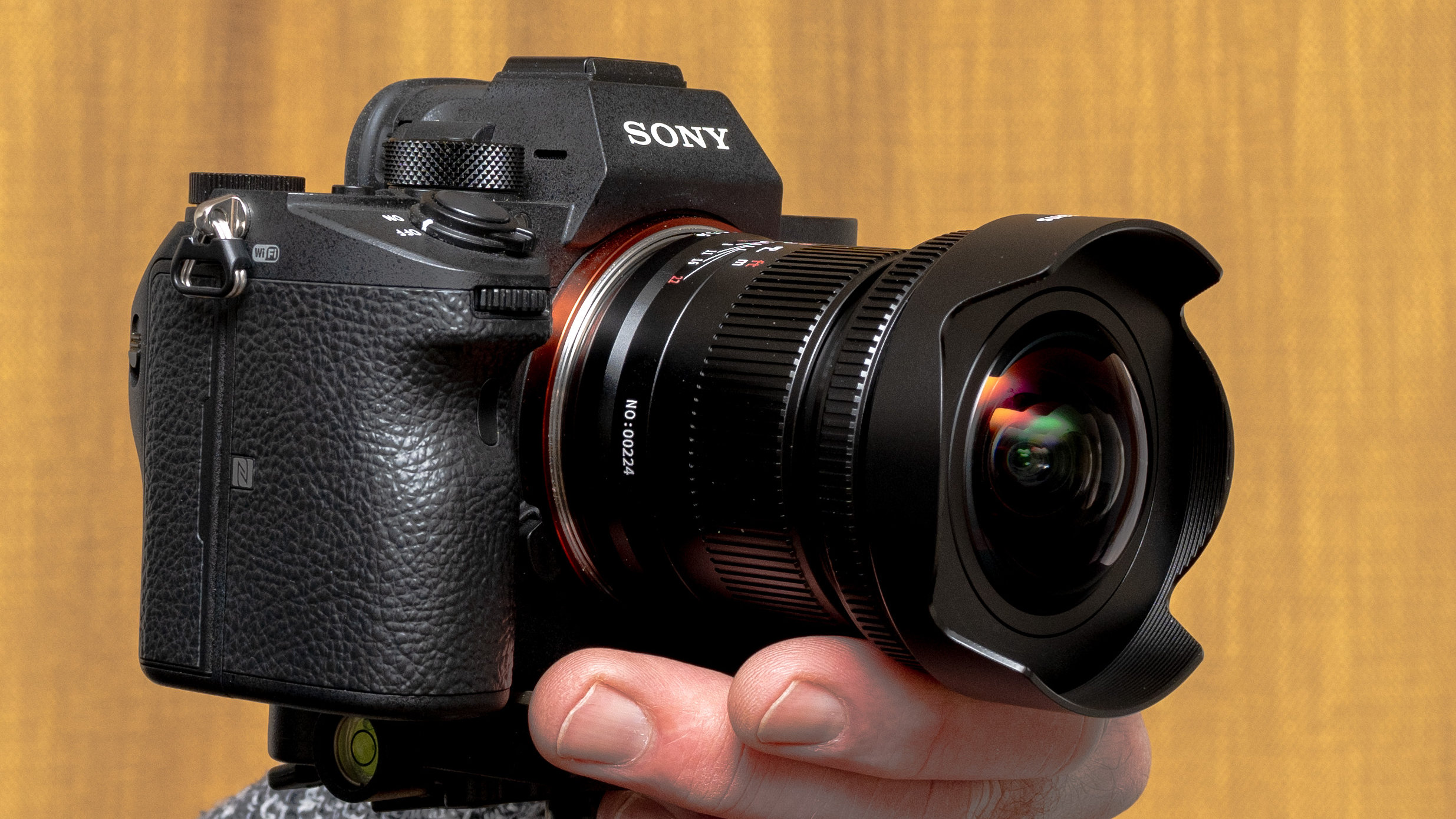
The 7Artisans 9mm F5.6 is a full-frame compatible lens that comes in Canon RF, Leica L, Nikon Z and Sony E mount options. It has an astonishingly wide field of view for a rectilinear lens, pretty much as wide as it gets without going curvilinear, or ‘fisheye’. Speaking of which, 7Artisans also offers a highly capable 10mm F2.8 Fisheye and some other very desirable lenses including the super-fast 50mm F1.05. Like those two, the 9mm F5.6 is a fully manual lens with no built-in electronics, but that’s not really a setback, as we’ll come to later.
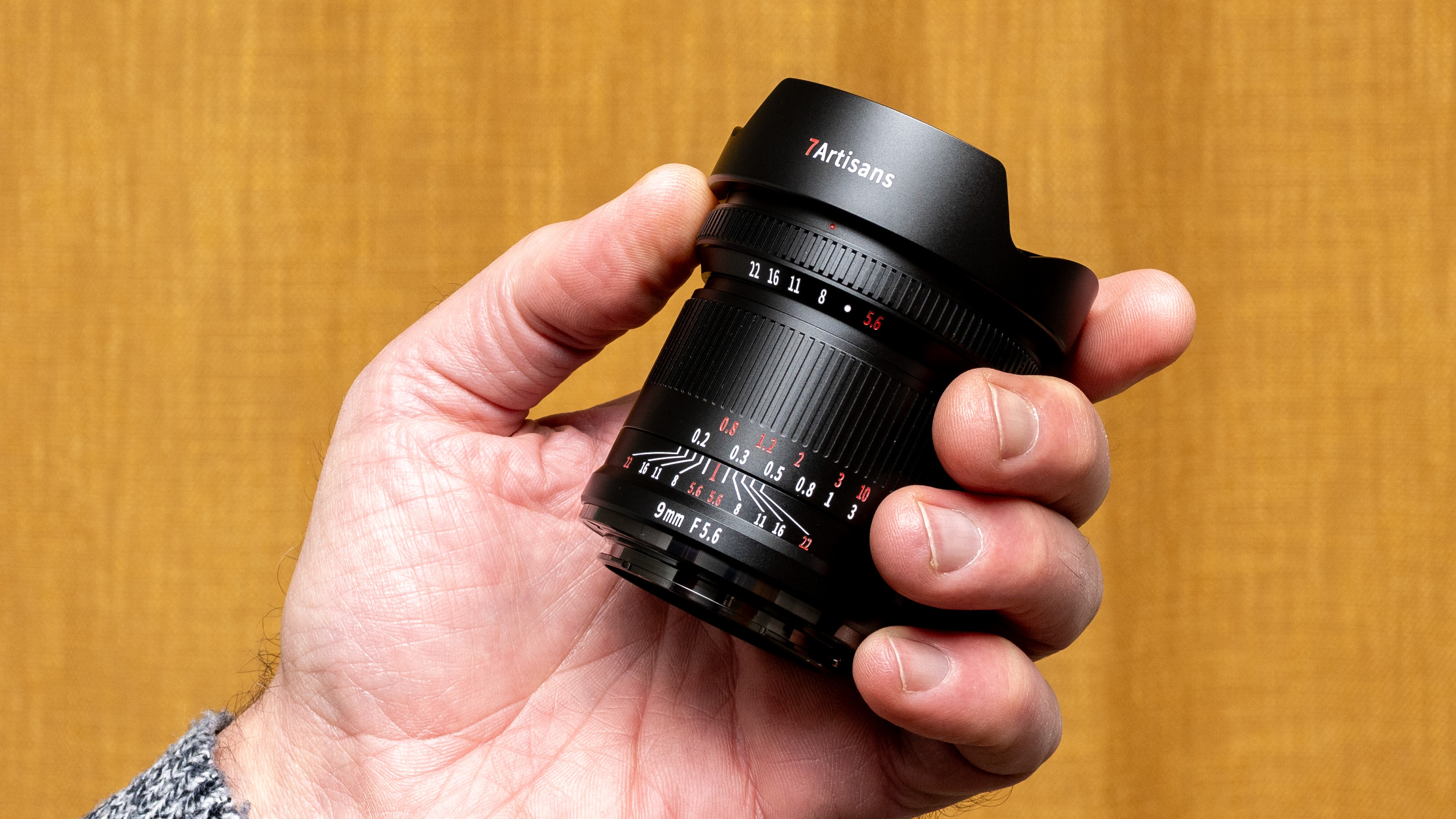
Specifications
Mount: Canon RF, Leica L, Nikon Z, Sony FE
Full-frame: Yes
Autofocus: No
Stablization: No
Lens construction: 16 elements in 11 groups
Angle of view: 132 degrees
Diaphragm blades: 5
Minimum aperture: f/22
Minimum focusing distance: 0.2m
Autofocus type: Manual only
Filter size: N/A
Dimensions: 70x86mm
Weight: 463g
Key features
There are 132 degrees of key feature packed into this diminutive lens. Put your eye to the camera’s viewfinder and it gives an instant wow-factor. We’ve genuinely tried this with people and they’ve literally said ‘WOW’! It’s simply amazing how much you can squeeze into the image frame, making the lens ideal for sweeping vistas in landscape photography and cityscapes. It also plays into your hands when you’re shooting architectural interiors and simply can’t get enough into the frame even when your back’s up against the wall. The lens could potentially be great for starry night photography, although the modest f/5.6 aperture is a bit on the slow side for full-on astrophotography.
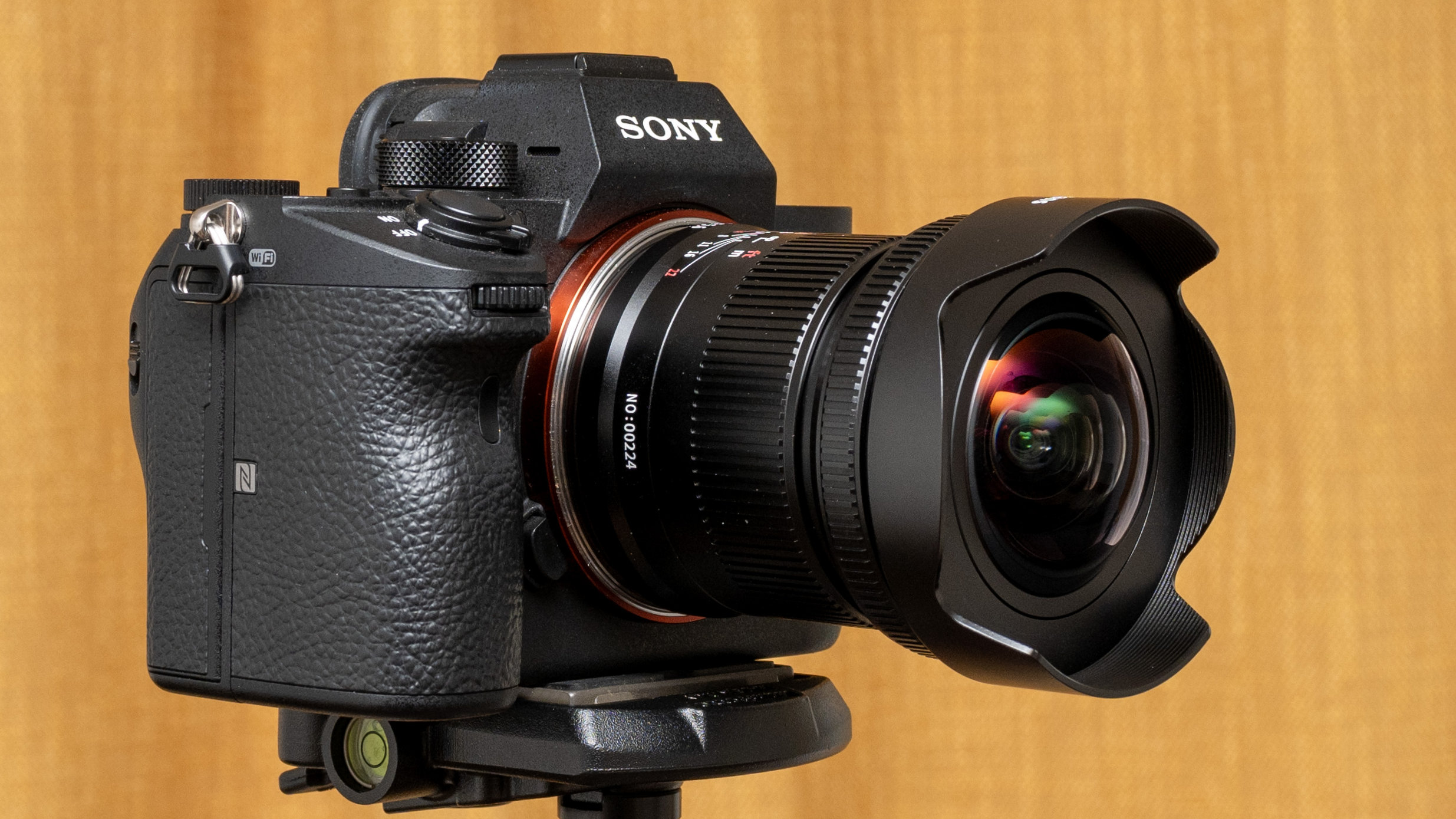
As a rectilinear lens, the 9mm aims to keep distortion to a minimum and give a natural view, unlike the notoriously extreme barrel distortion of the 7Artisans 10mm fisheye lens. Considering the small size of the lens, it’s surprising that 16 optical elements are packed into it, arranged in 11 groups. High-end glass includes two aspherical elements, two ED (Extra-low Dispersion) elements and three HRI (High Refractive Index) elements. The overall aim is to maximize sharpness, contrast and clarity, while keeping unwanted aberrations to a minimum. Coatings are also applied to reduce ghosting and flare.
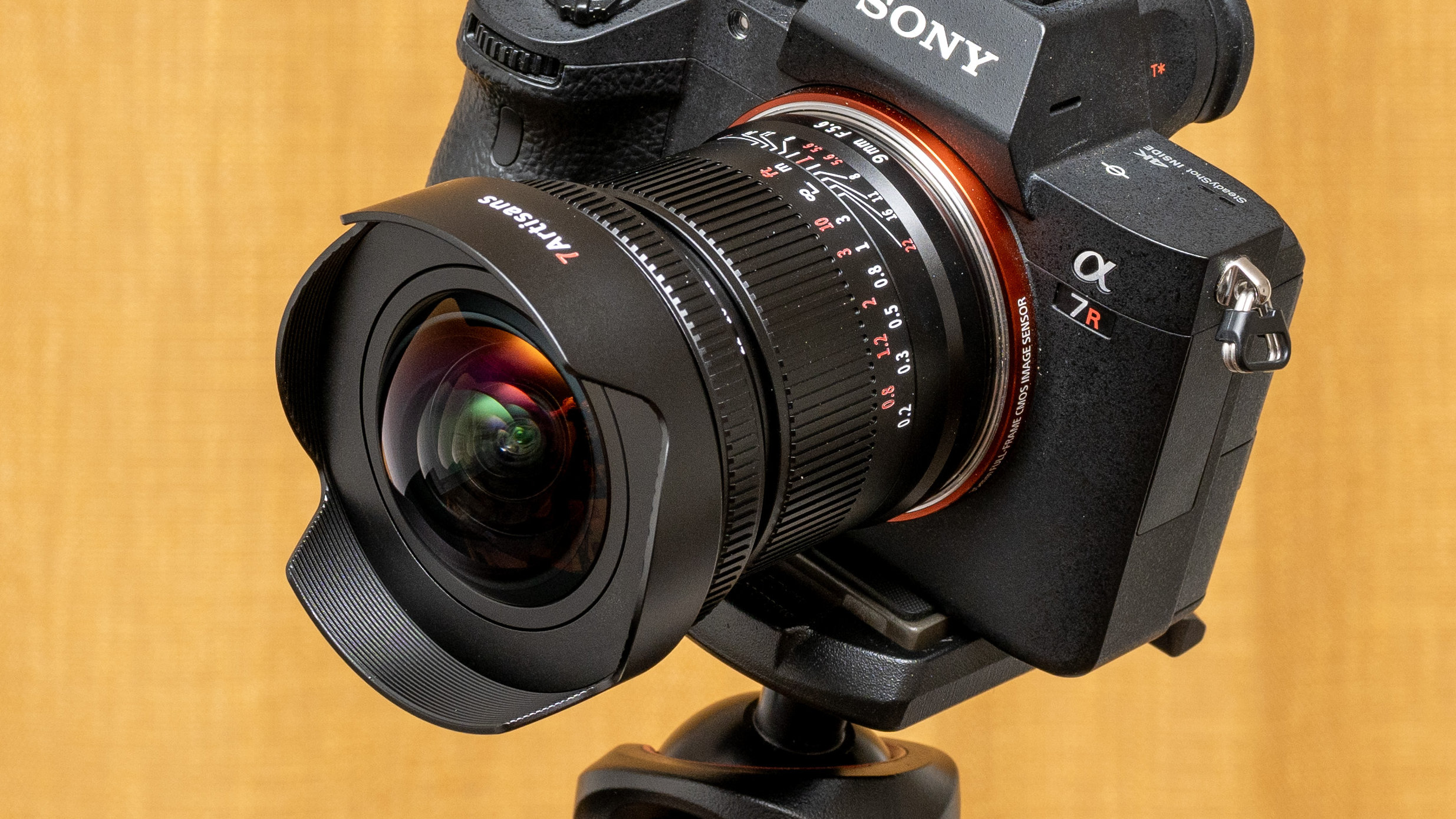
Aperture control is based on a 5-blade diaphragm, which produces strong 10-point sun-stars when shooting into the light. As we mentioned earlier, the lens is fully manual and features no built-in electronics. There’s therefore no data communication between the lens and host camera body. As such, you not only have to focus manually, but you also need to set the aperture via the lens’s control ring, and no lens based EXIF information is stored in image files.
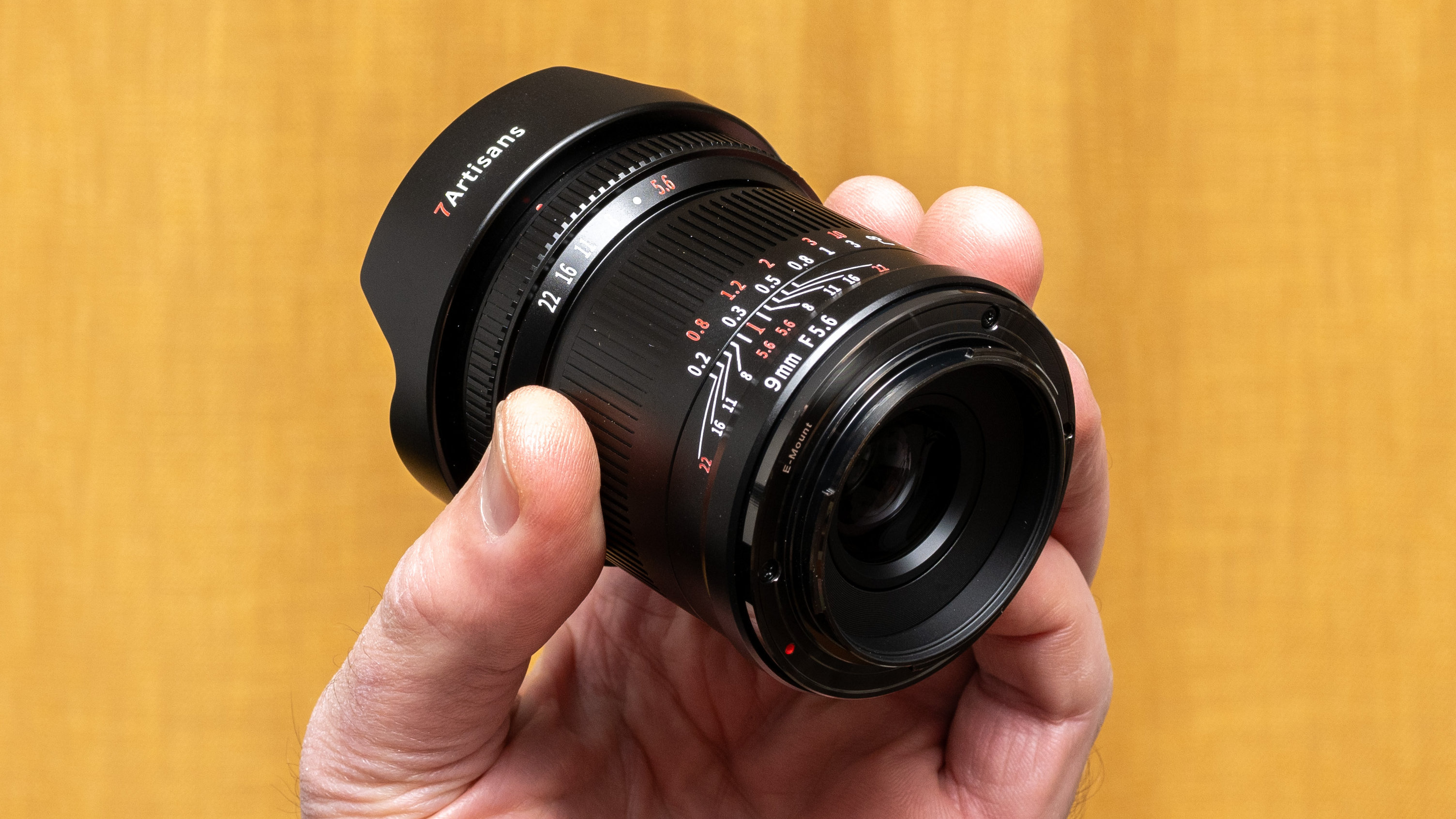
Build and handling
Considering the very competitive asking price, the lens feels very well made. It has a durable metal construction that extends to the barrel, mounting plate, hood and even the slip-over hood. That’s a lot of metal. As usual with ultra-wide-angle lenses, the hood is integral and can’t be removed, as it gives physical protection to the bulbous front element, which protrudes from the barrel. The only real downside is that there’s no filter attachment thread.
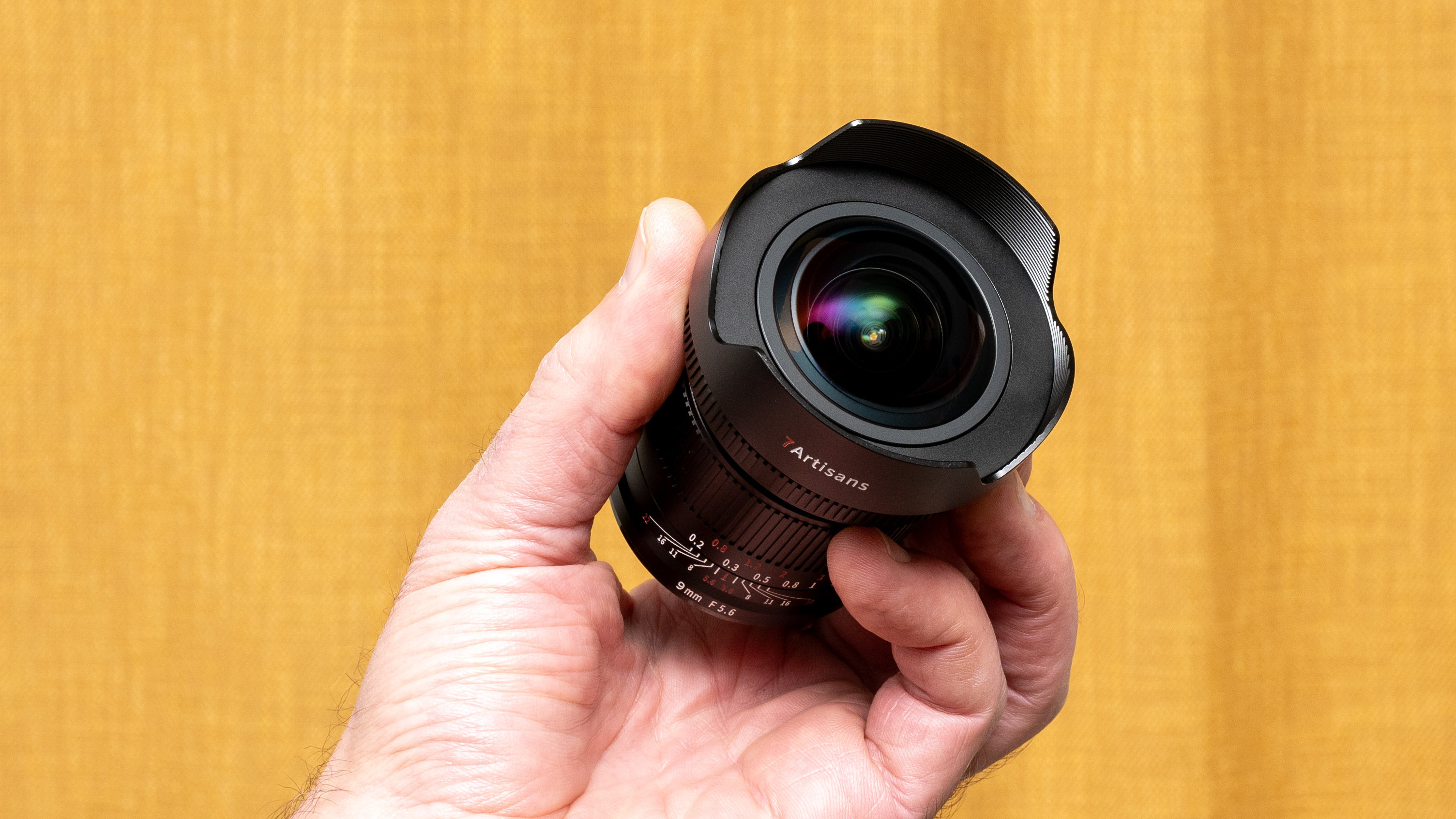
Compact and lightweight construction counts as a handling bonus. The lens measures just 70x86mm and weighing 463g. It certainly gives a bit of light relief if you’re used to big, hefty ultra-wide-angle zoom lenses for full-frame cameras.
The aperture control ring has full f/stop click steps, ranging from f/5.6 to f/22, with the addition of a half-stop click between f/5.6 and f/8. As a focusing aid, depth of field markers are printed alongside the focus distance scale for every full f/stop. The lens itself focuses down to a minimum distance of 0.2m, or 8 inches.
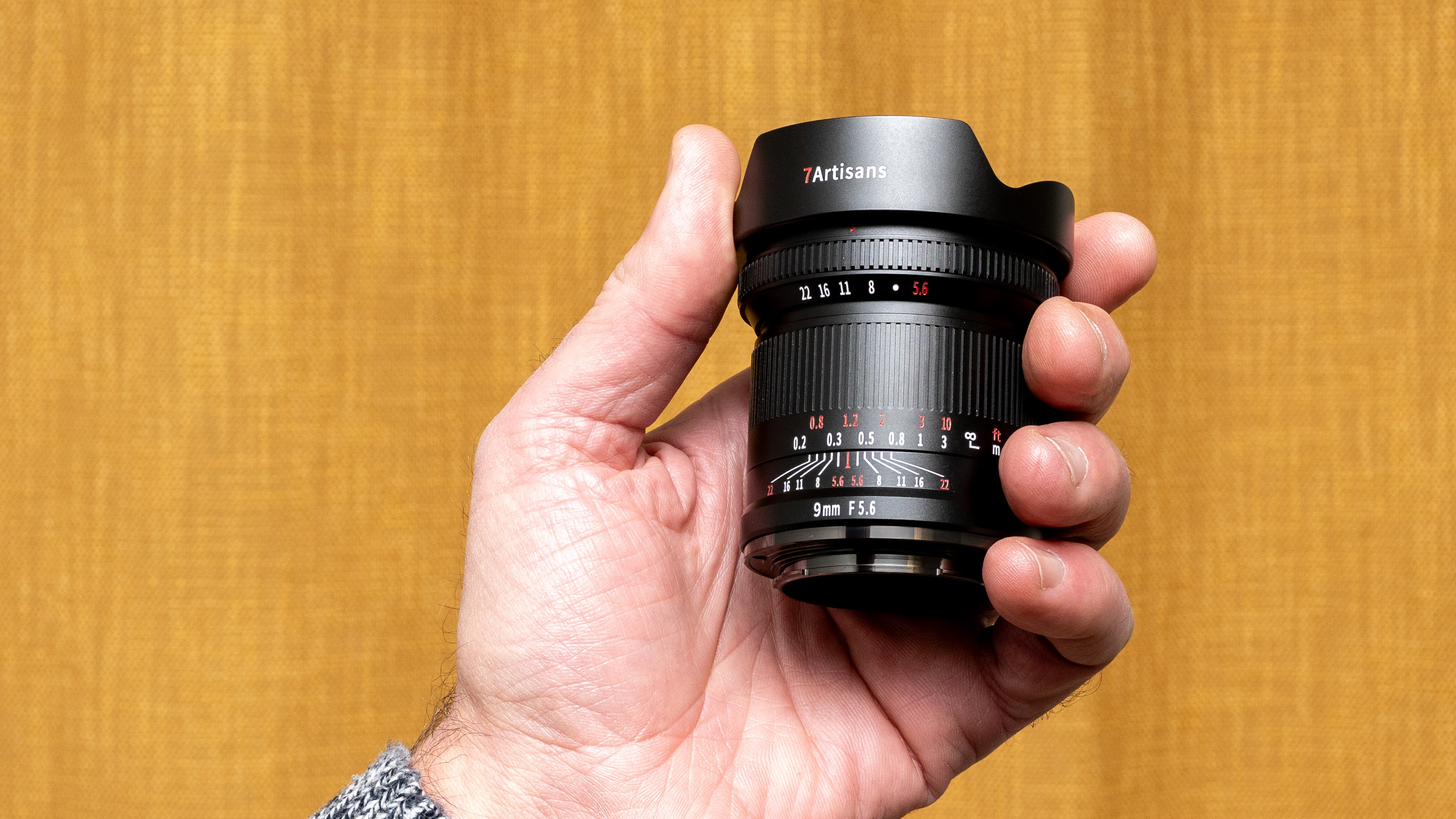
You might be put off by the lack of autofocus, but don’t be. When it comes down to it, the depth of field is so enormous that manual focusing needs little precision. In practice, we found that even at the widest aperture of f/5.6, we could set the focus distance to 3m and everything looked sharp from 1m away to infinity. The focus ring itself operates with a smooth feel and tactile feedback, while the forward position of the aperture ring helps to avoid unintended adjustments.
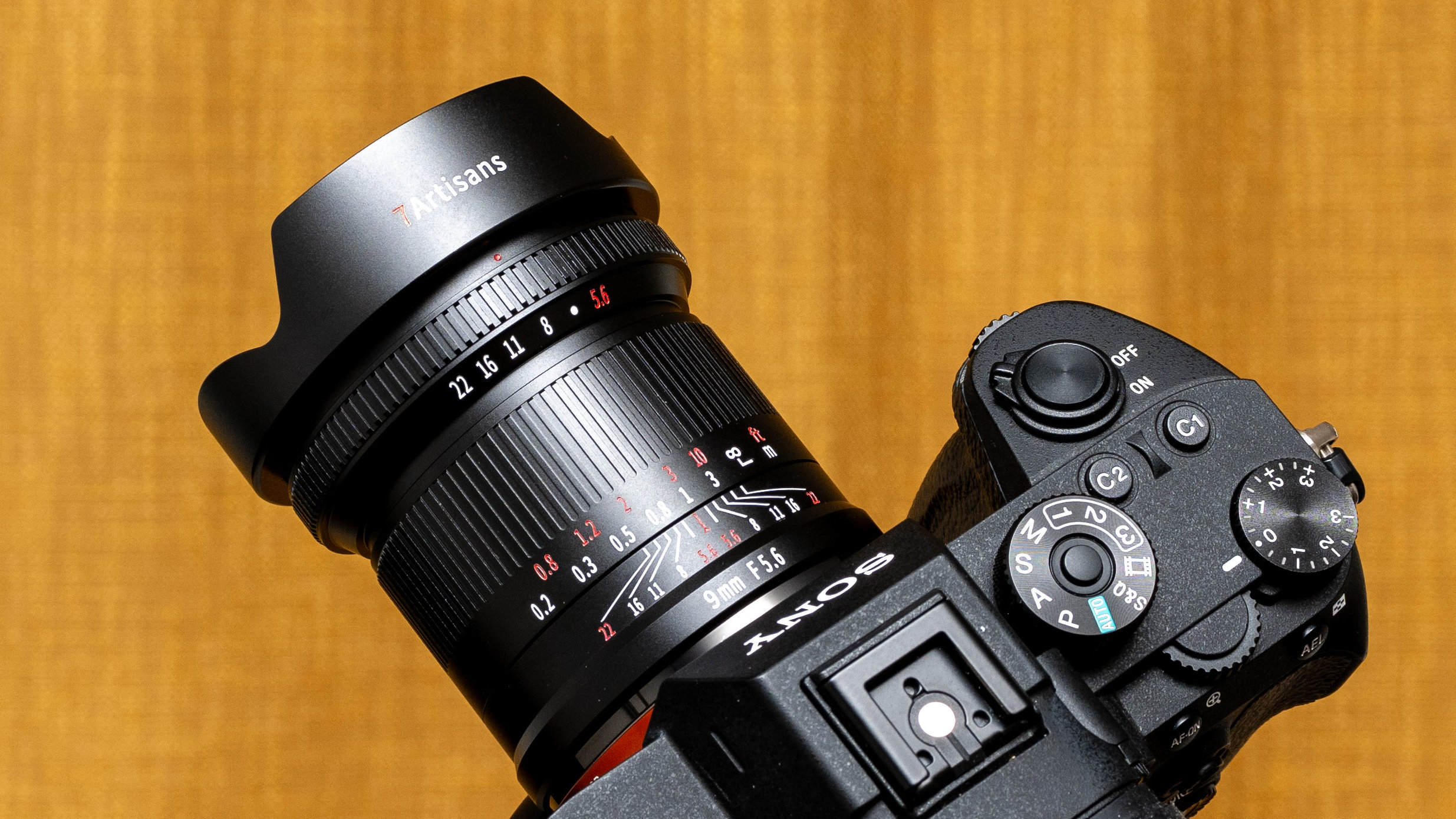
Another handling upside is that, as the lens is designed for mirrorless cameras with a live preview of exposure, there’s no darkening of the viewfinder when you stop down to narrow apertures. That can be a proper pain when using manual lenses on DSLRs. A final point on build quality is that the construction doesn’t include any weather-seals but that’s not surprising, considering the very affordable asking price.
Performance
When you’re cramming such an epic viewing angle into such a small lens, something has to give. But it’s surprisingly little in this case. The 7Artisans 9mm might not be the sharpest tool in the box, but it’s able to resolve a lot of fine detail in its huge field of view. It can’t do ultimate justice to a 45 megapixel image sensor but we certainly got acceptable results with our 45MP Sony A7R III. As you’d expect, sharpness in the central region of the frame is more impressive than at the edges and corners, but it still holds up pretty well at the extremities.
Being a fully manual lens with no electronic communication, it’s on its own in various other areas of performance, without automatic in-camera corrections being available. Bearing that in mind, distortion is remarkably minimal for such an ultra-wide-angle lens and color fringing is well controlled. A kind of distortion that you certainly can get is that the incredibly wide viewing angle lets you really exaggerate perspective and stretch the distance between foreground and background areas within a scene. Again, automatic correction for vignetting is off the menu, and the drop-off in peripheral illumination can be noticeable at f/5.6.
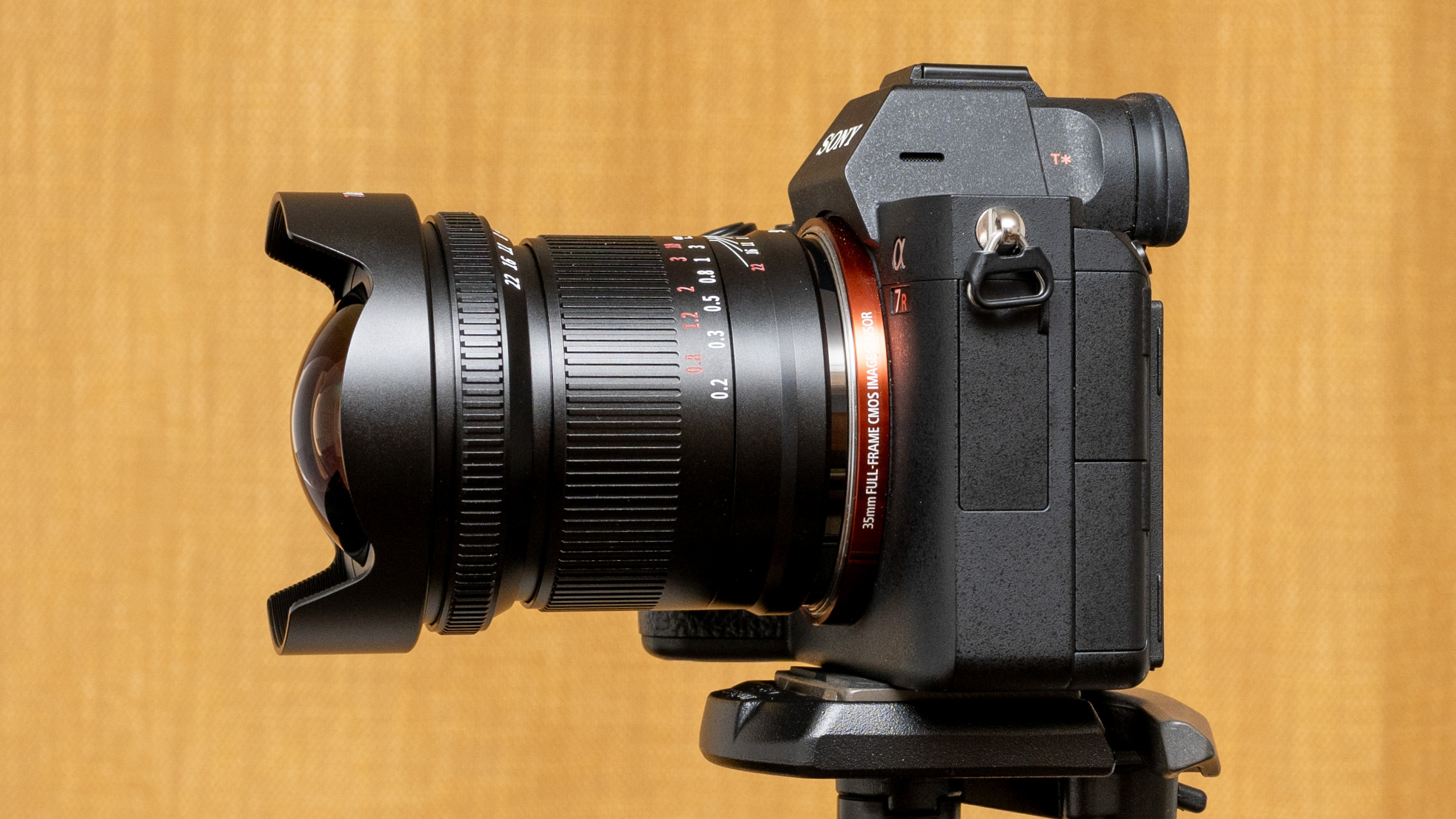
The very short focal length enables you to use fairly slow shutter speeds in handheld shooting without suffering the effects of camera-shake. A further bonus is that, despite the lack of electronics, you can dial in the focal length and/or aperture of the lens manually with many full-frame mirrorless camera bodies, making in-body image stabilization available.
All in all, performance, build quality and handling are very convincing for such an ultra-wide-angle lens, especially at such a competitive selling price.
Sample images
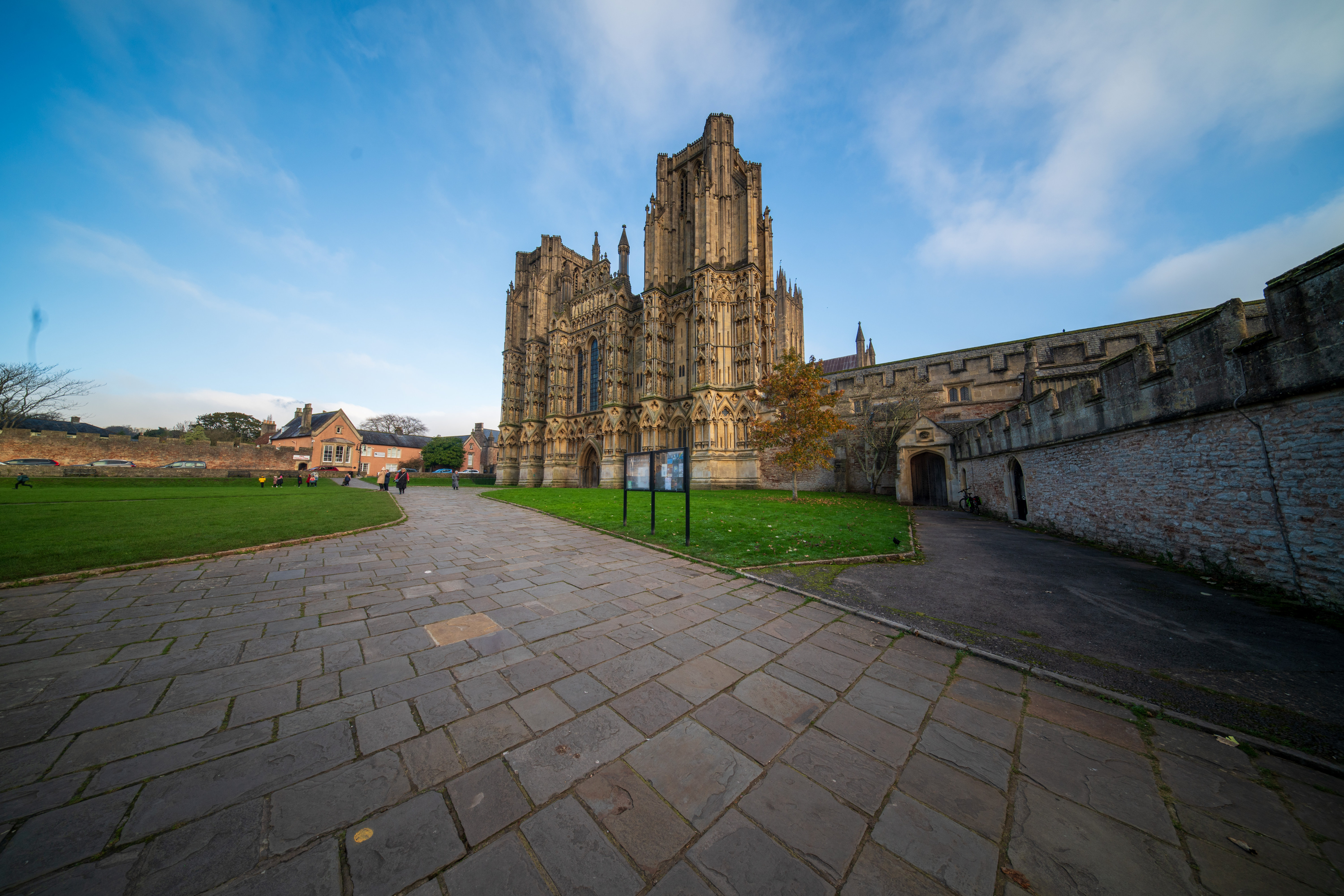
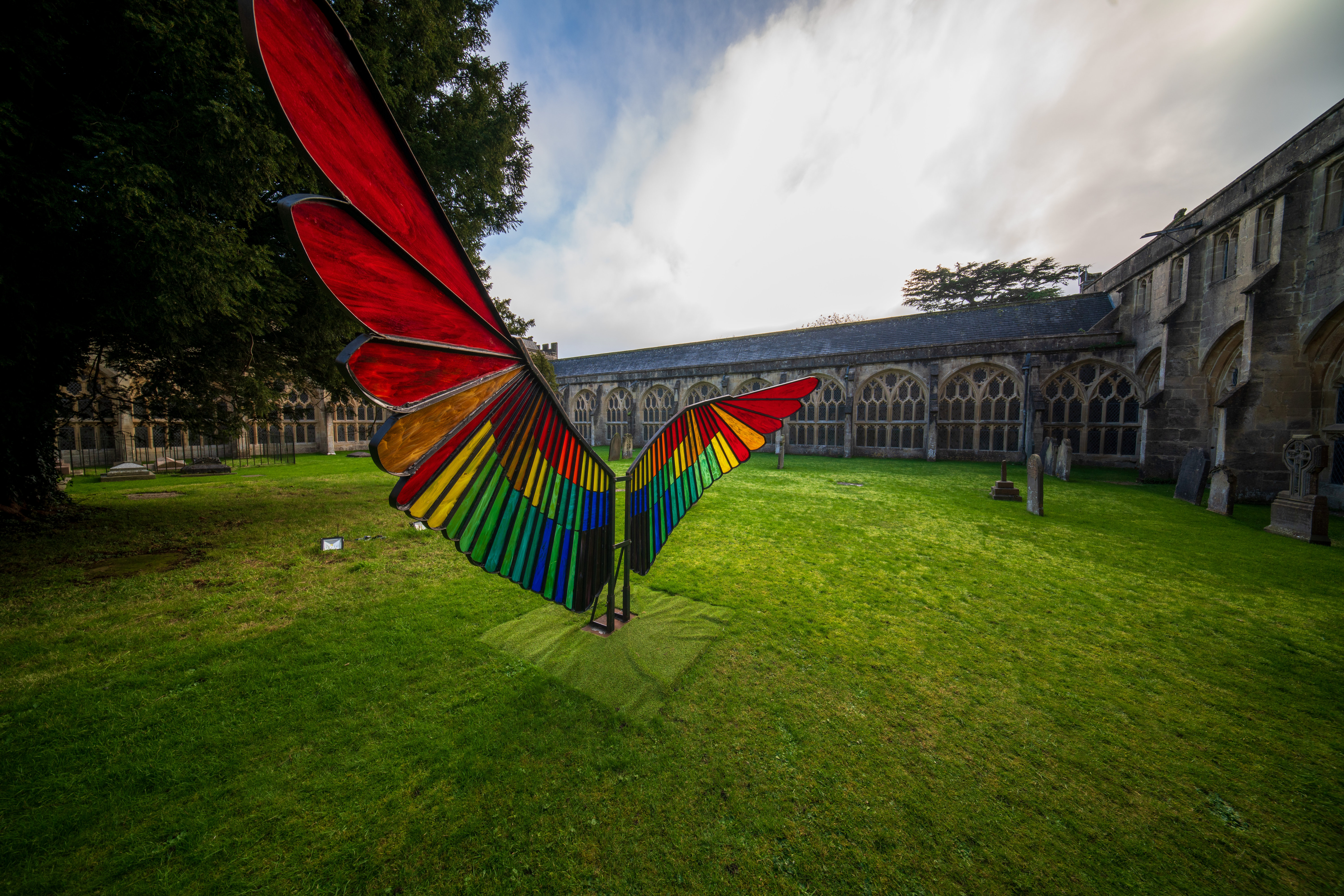

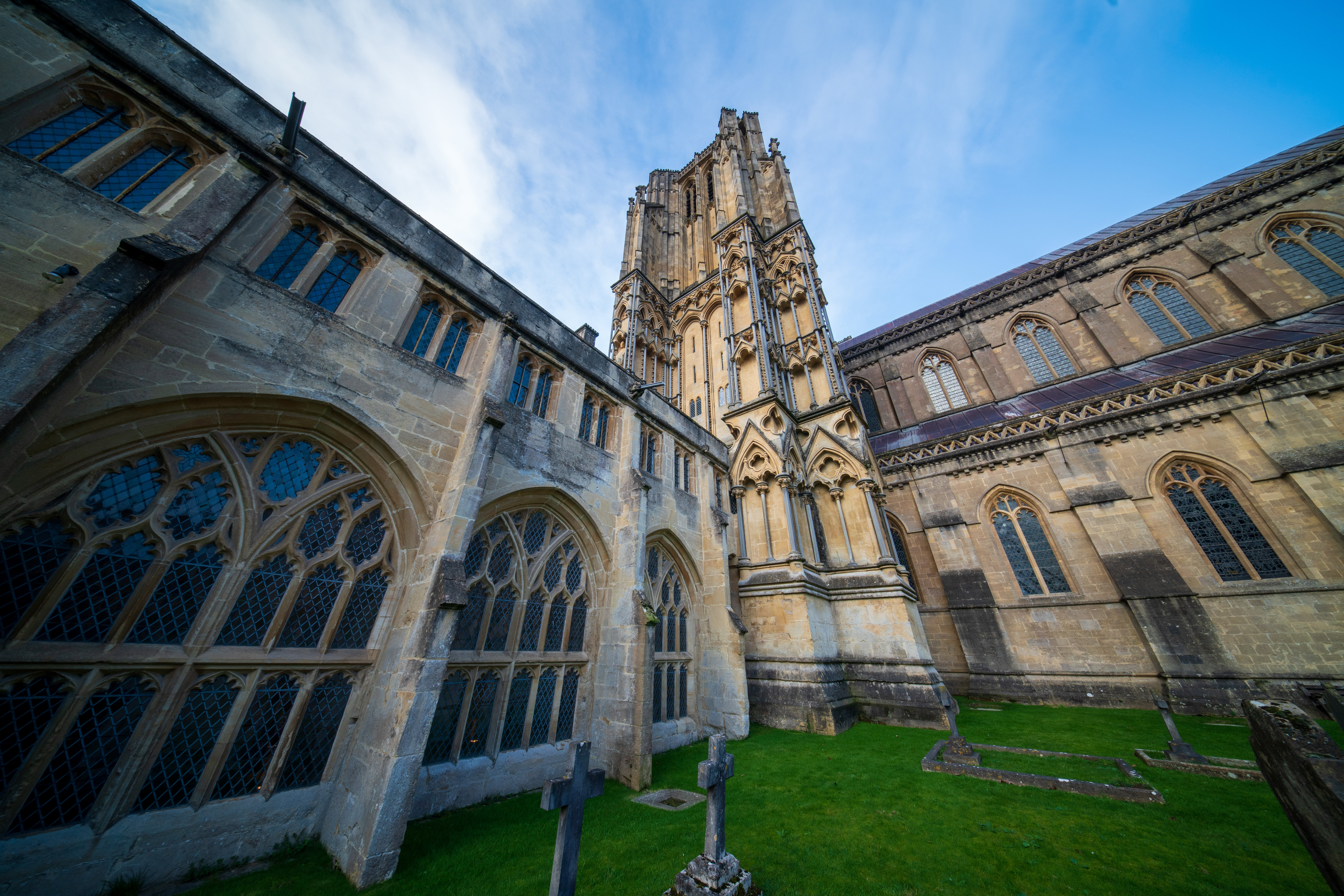
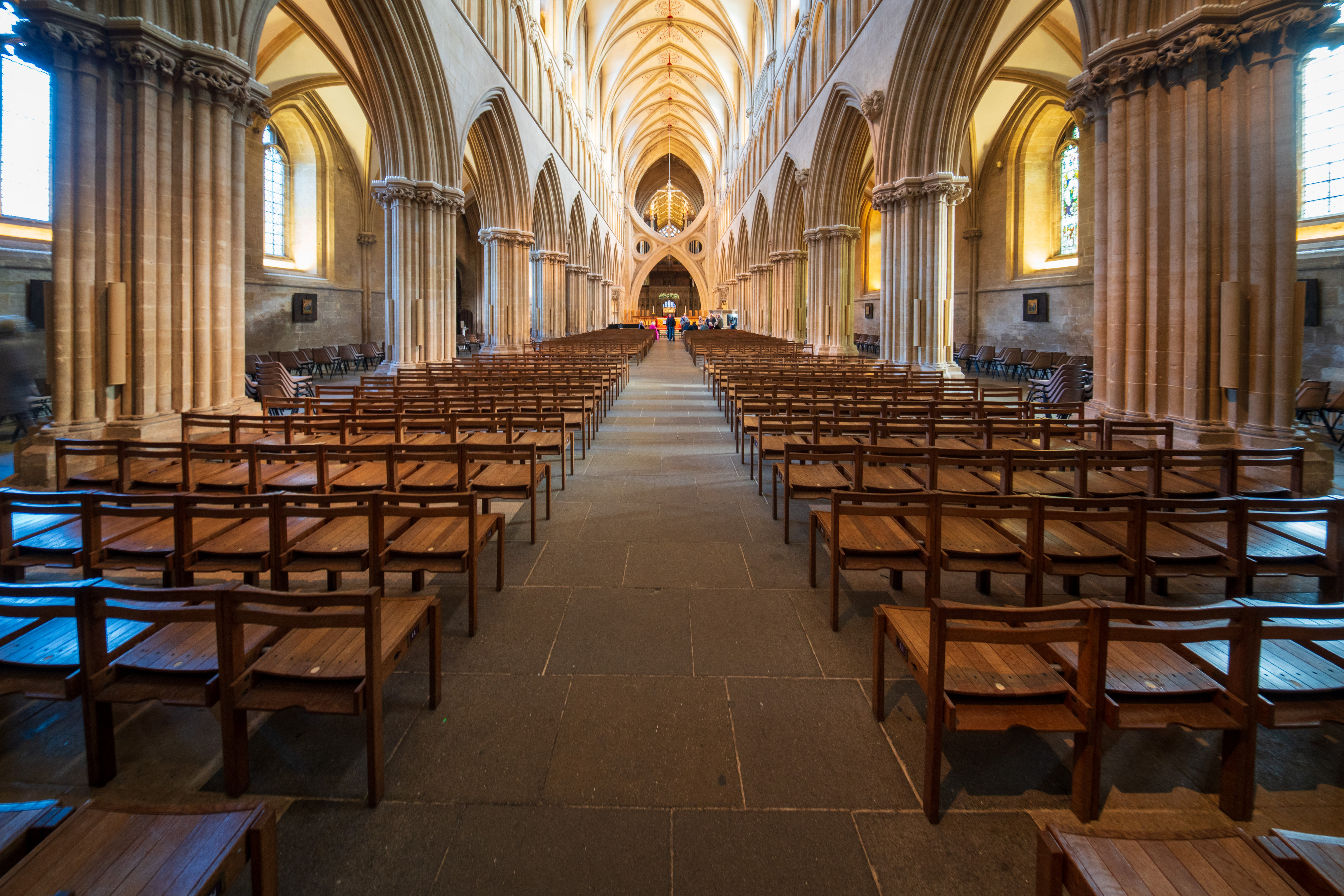
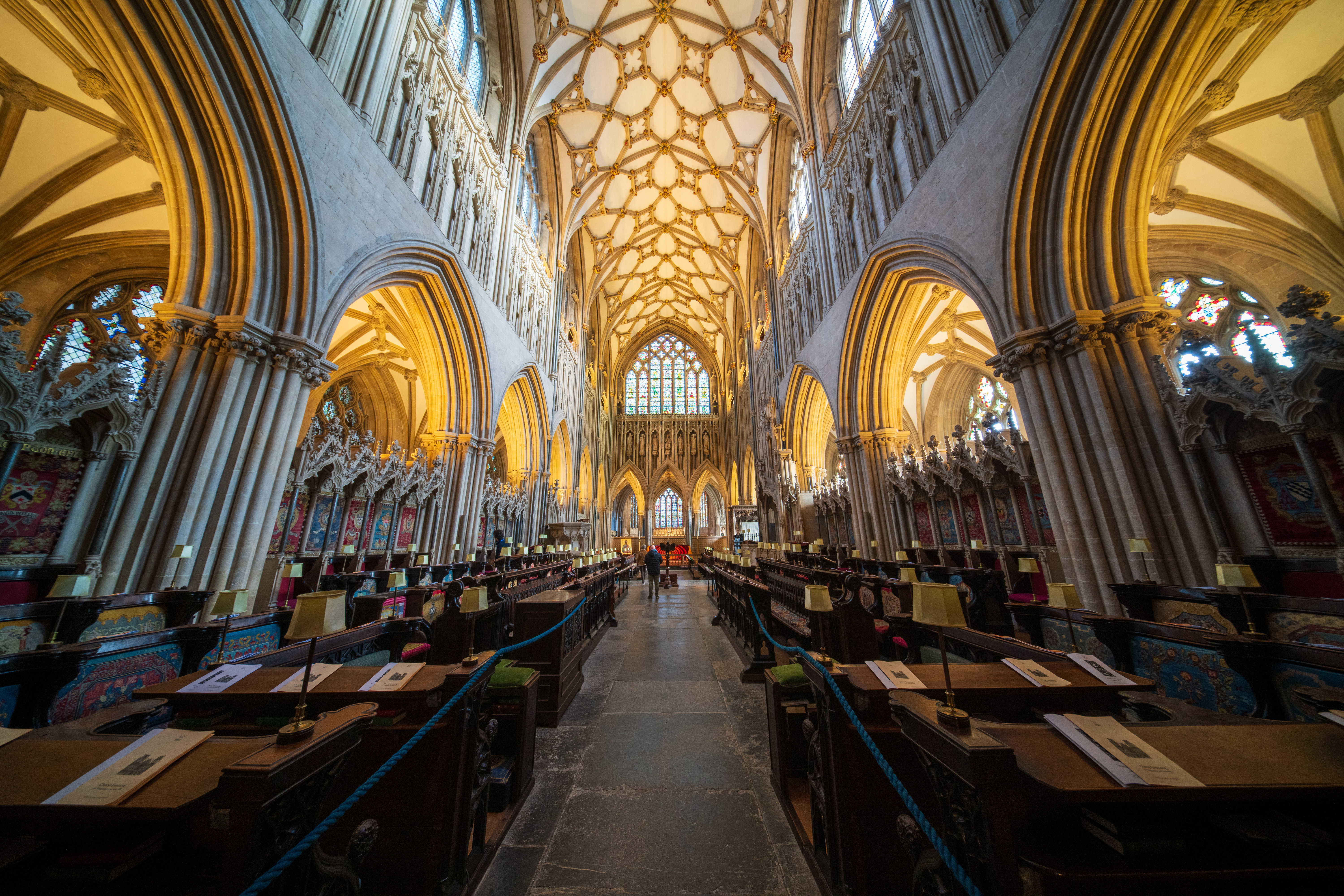
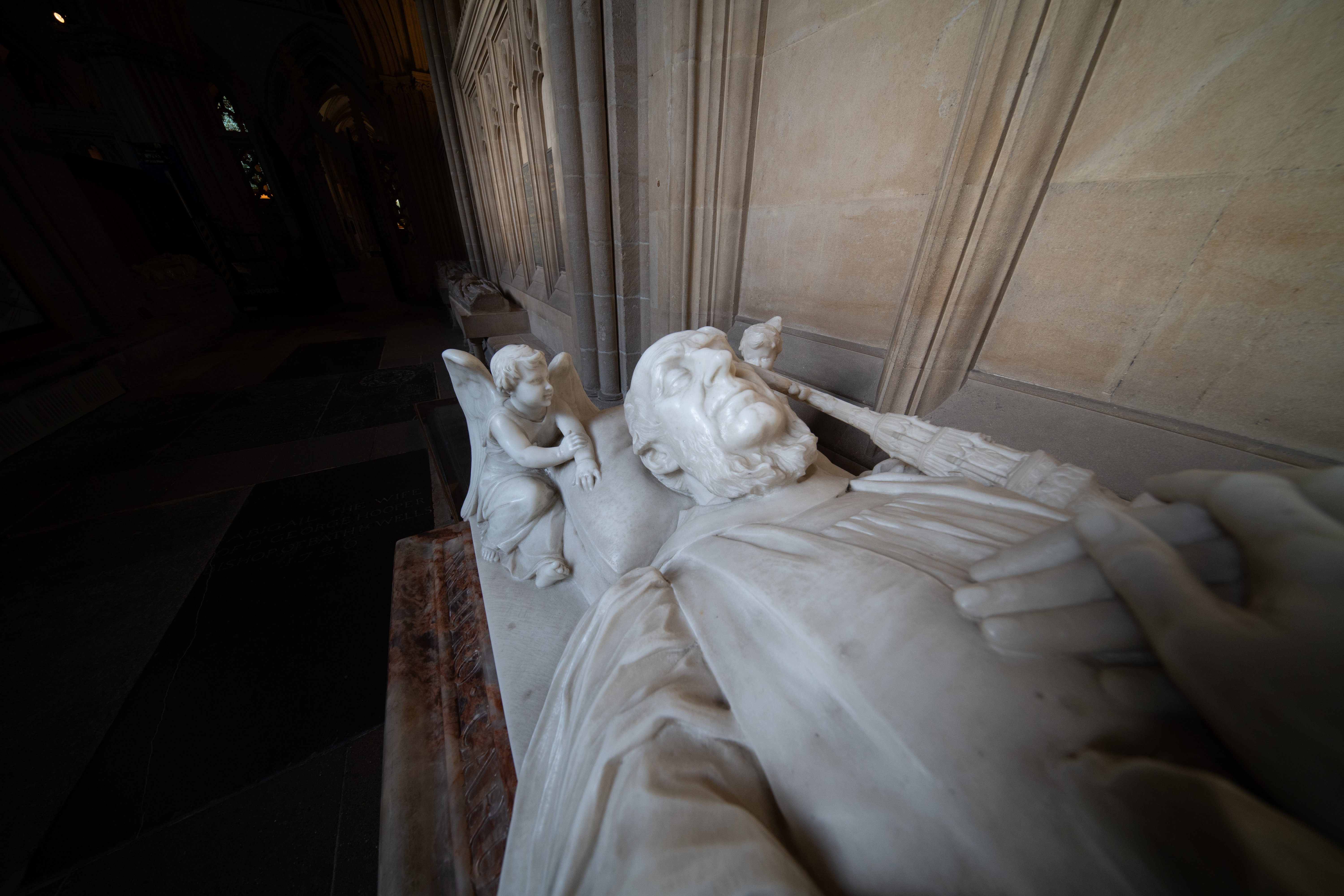

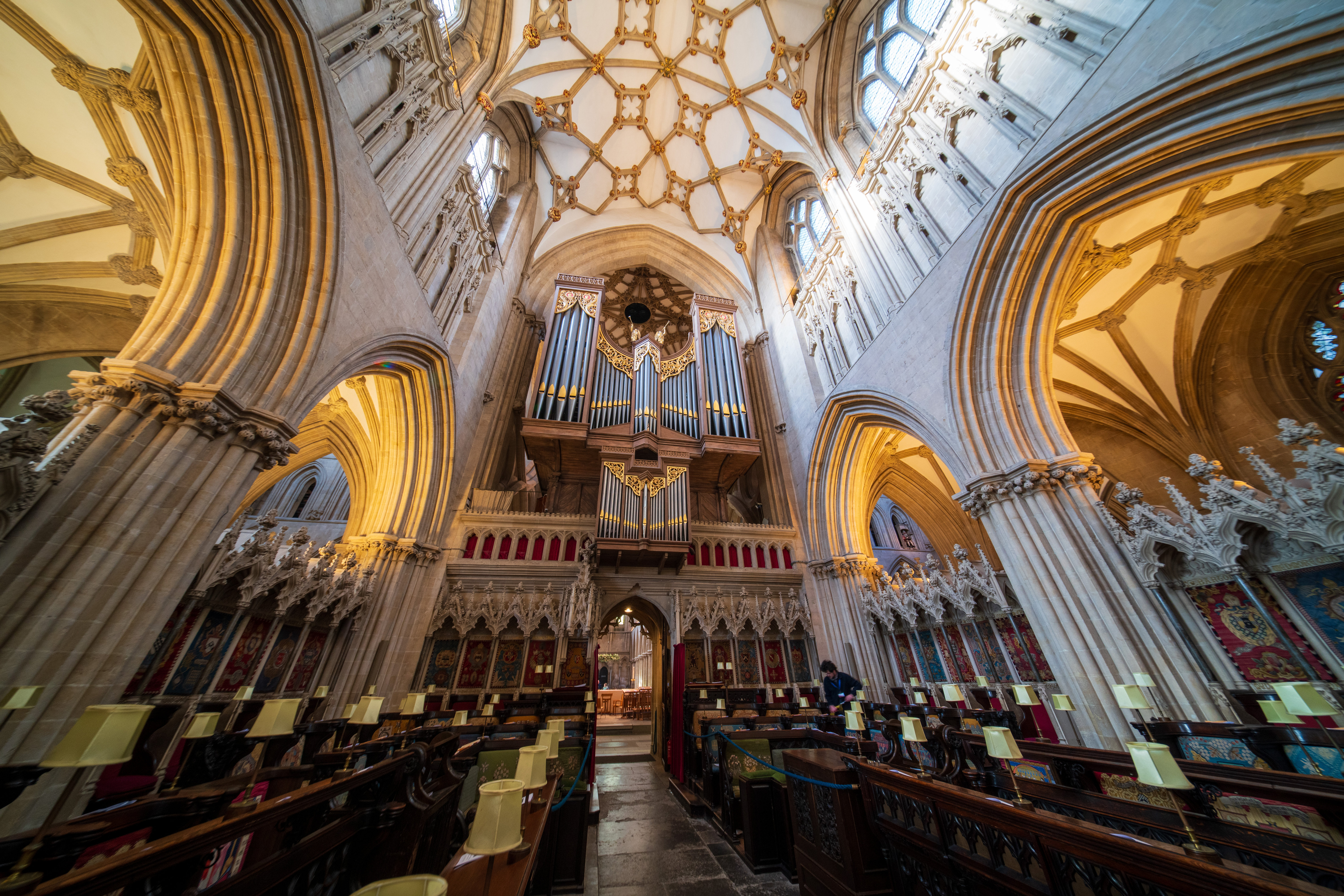
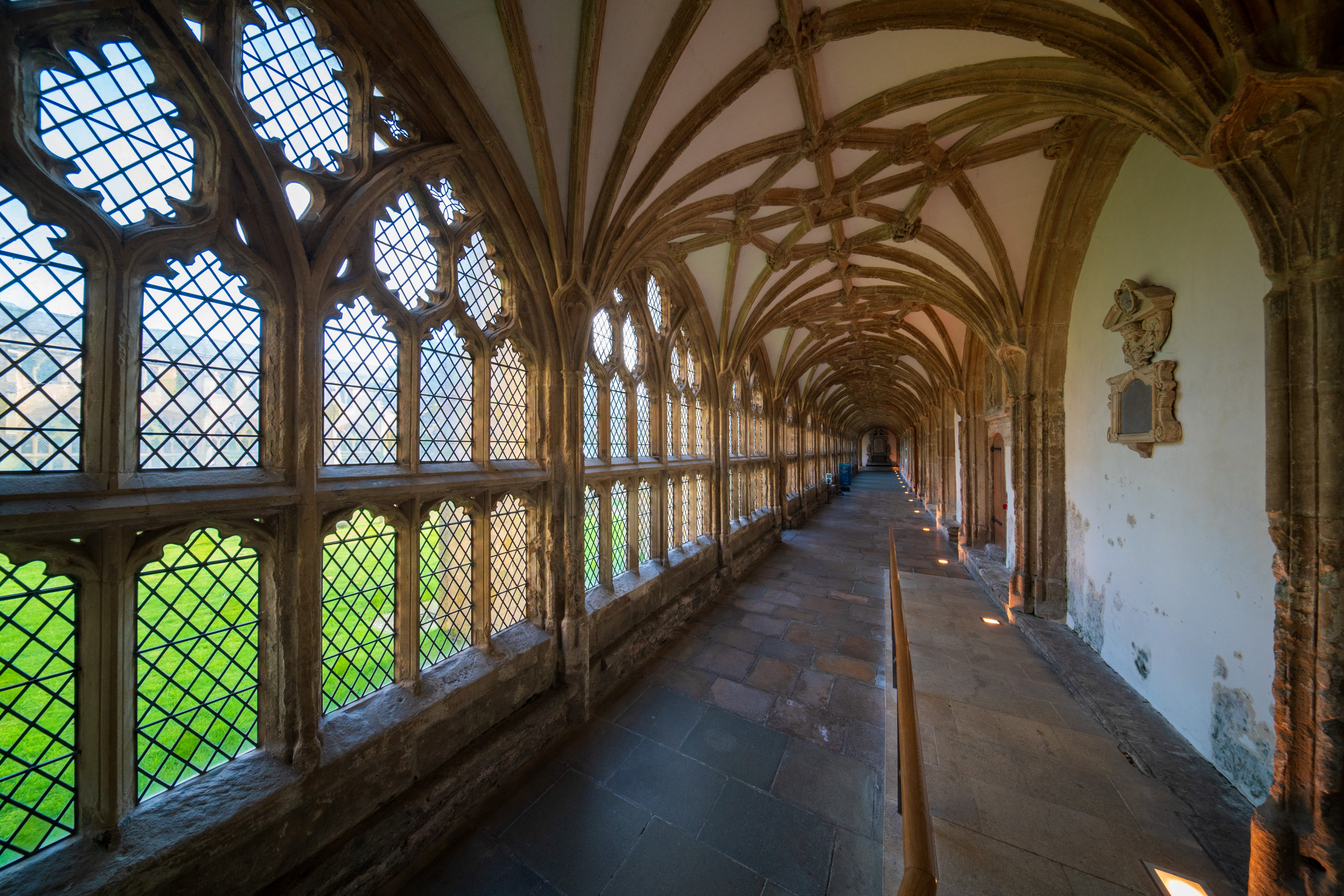
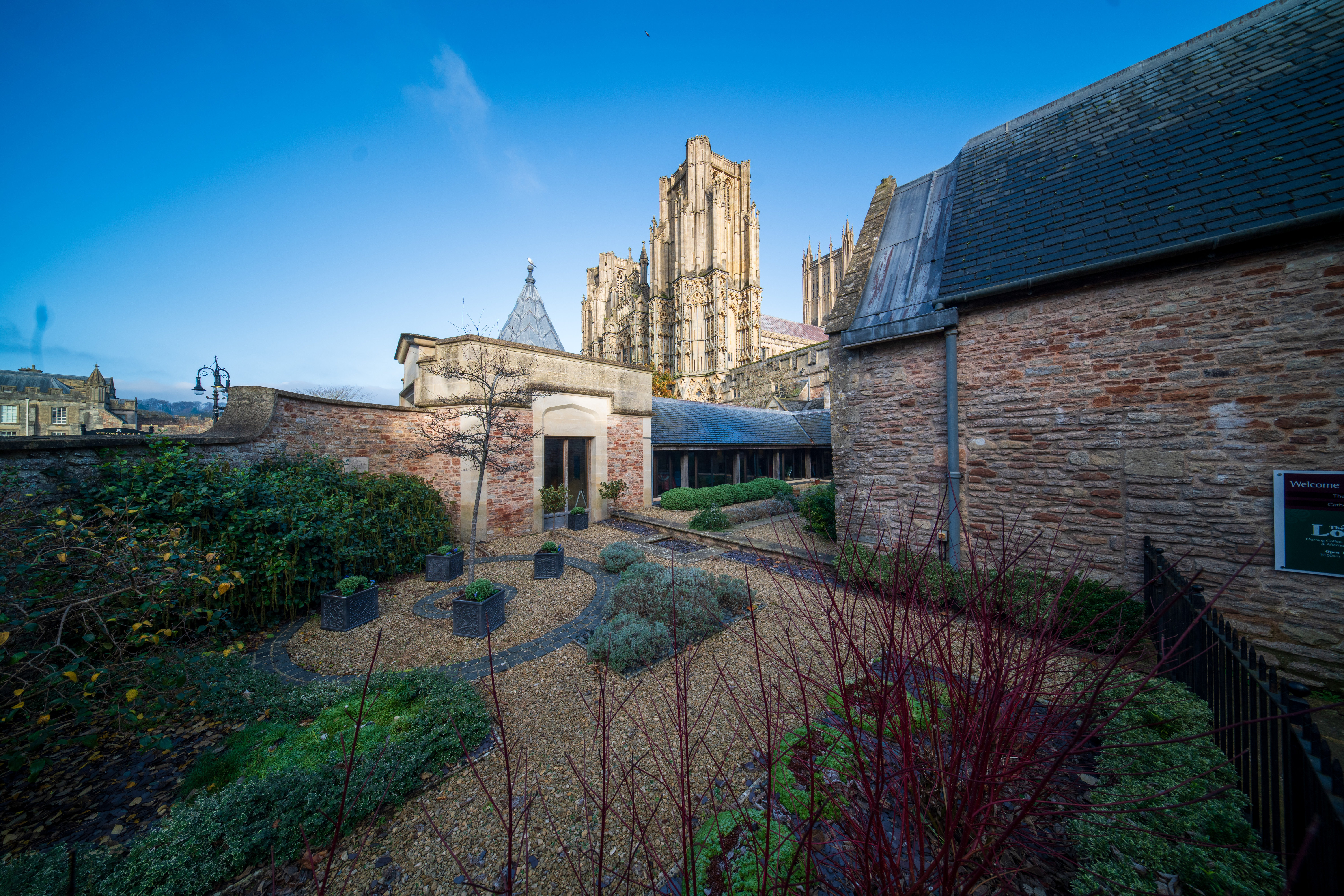
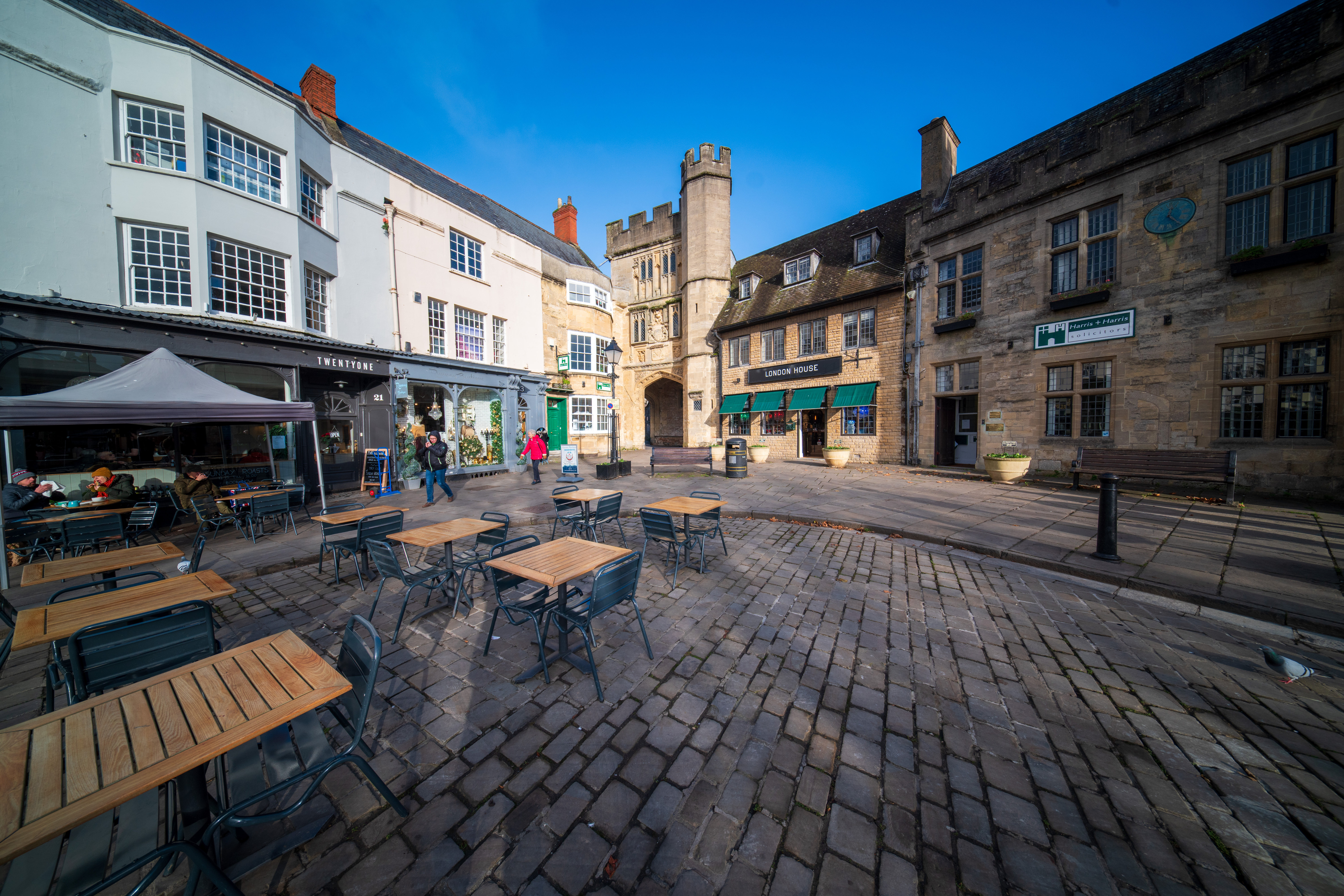
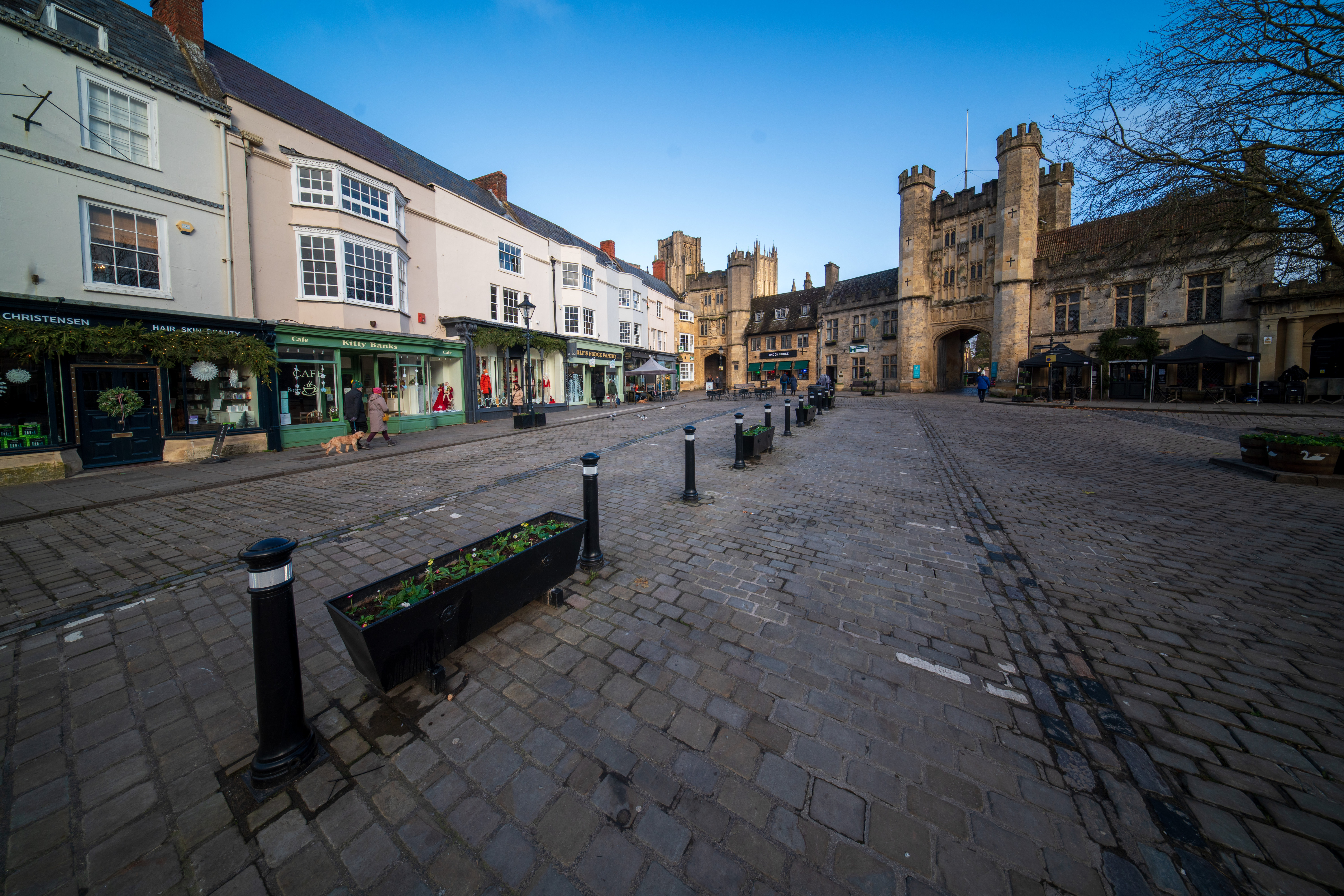
Lab results
We run a range of lab tests under controlled conditions, using the Imatest Master testing suite. Photos of test charts are taken across the range of apertures and zooms (where available), then analyzed for sharpness, distortion and chromatic aberrations.
We use Imatest SFR (spatial frequency response) charts and analysis software to plot lens resolution at the center of the image frame, corners and mid-point distances, across the range of aperture settings and, with zoom lenses, at four different focal lengths. The tests also measure distortion and color fringing (chromatic aberration).
Sharpness:
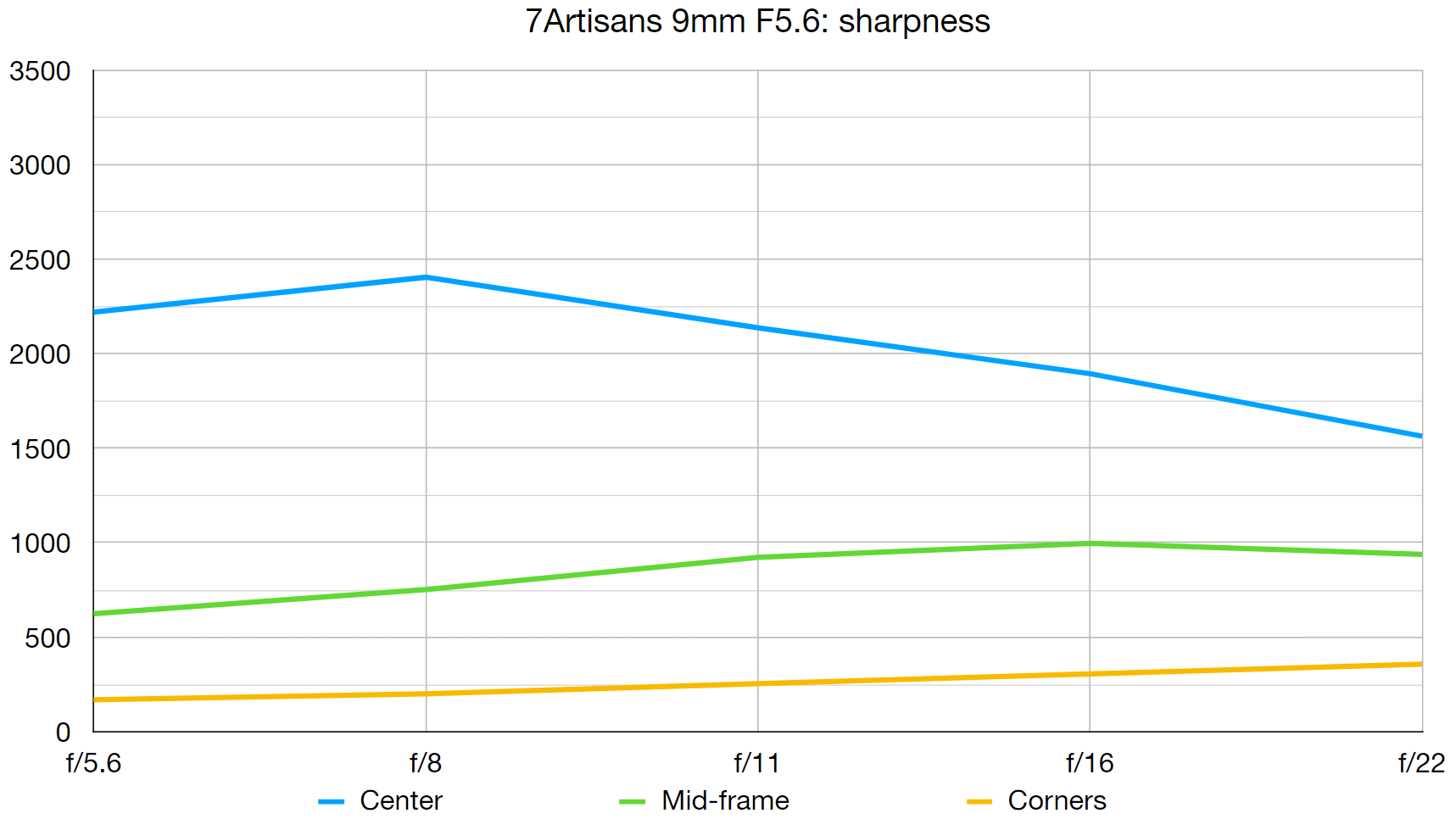
In our lab tests, sharpness looks very impressive at the center of the frame but pretty dire towards the edges. Bear in mind though that the extremely wide viewing angle of the lens requires shots of test charts to be taken from a very close distance, which makes edge-sharpness look worse than it really is in ‘real-world’ shooting.
Fringing:
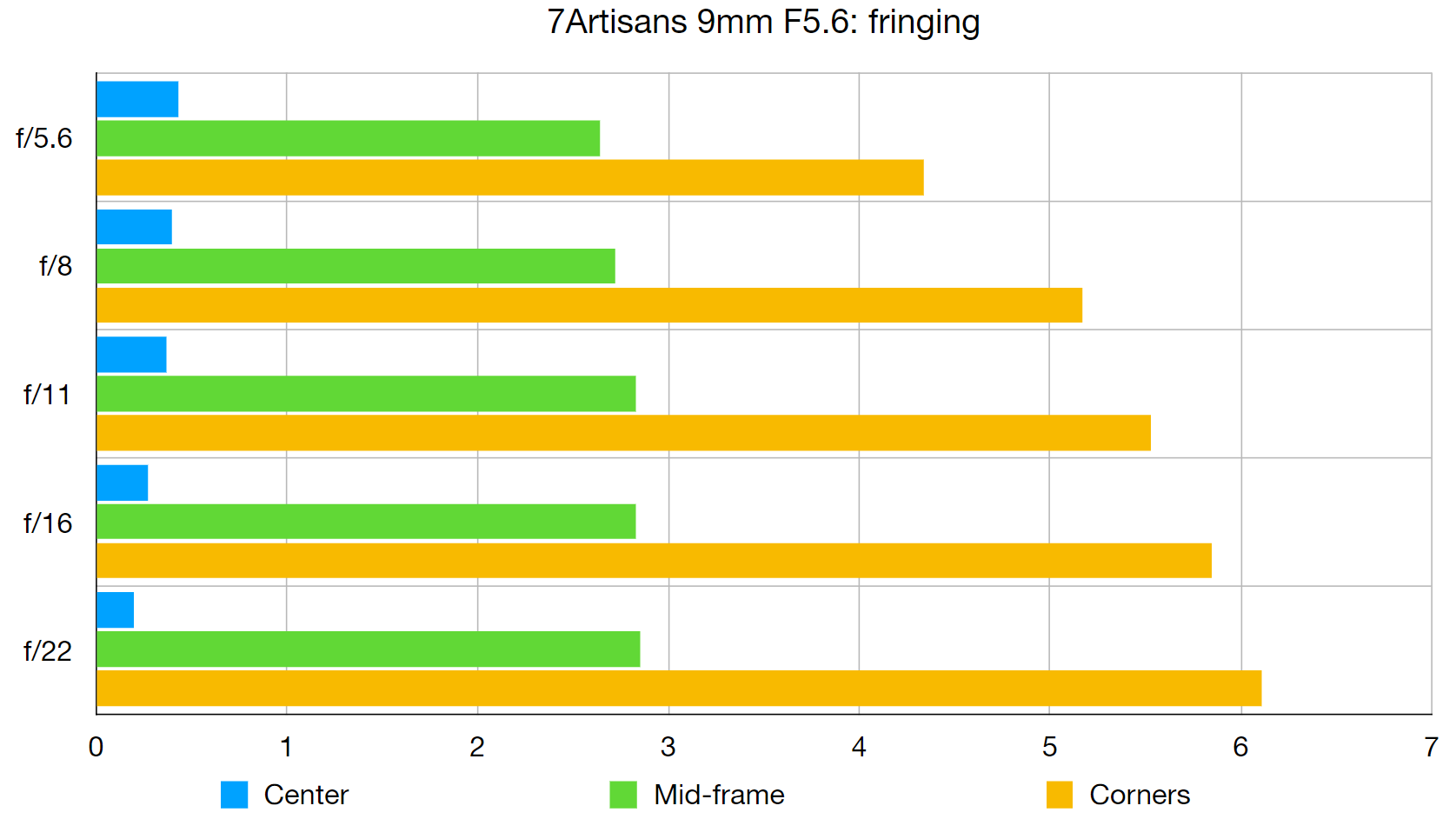
Color fringing can be noticeable towards the edges and corners of the frame under laboratory conditions. This is due to how close the lens has to be positioned to our test chart in order to maintain correct framing, which in turn creates an extreme angle between the lens and the corners of the chart. However, as with edge-sharpness, we didn’t find fringing to be a major problem in our real-world tests.
Distortion: -3.65
The closer you get, the more noticeable distortion becomes so, again, ultra-close-range results for our lab tests look unflattering. In more typical shooting conditions, barrel distortion certainly isn’t obvious and, either way, the 7Artisans produces much less distortion than we’ve seen in many other lenses designed for mirrorless cameras, which rely heavily on automatic correction.
Verdict
This conveniently compact and lightweight lens nevertheless bears some heavyweight credentials. It’s a rectilinear rather than curvilinear (or fisheye) lens, shoehorning an epic 132-degree viewing angle into its small build, and with a solid metal construction that stretches to the integral hood and slip-on metal cap. It’s a fully manual lens but focusing is quick and easy, thanks to the enormous depth of field, even at the lens’s widest aperture of f/5.6. At the price, it’s a nicely crafted and very useful kit bag addition for capturing sweeping vistas in landscape photography, architectural interiors when space is tight, vlogging when you want to set yourself in an expansive scene, and a lot more besides. We’re really rather keen on it!
Read more:
• Best camera lenses to get
• Best Canon lenses
• Best Nikon lenses
• Best Sony lenses







